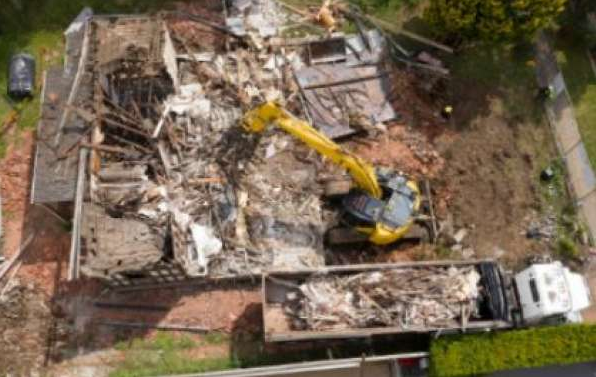The Cost of Demolition: A Comprehensive Guide

Cost Of Demolition step in many construction and renovation projects, involving the dismantling and removal of structures or parts of structures. Understanding the cost of demolition is essential for budgeting and planning, whether you're handling a residential renovation, commercial redevelopment, or industrial project. This guide provides an in-depth look at the factors influencing demolition costs, types of demolition, and tips for managing expenses.
Factors Influencing Demolition Costs
1. Type of Demolition
1.1. Structural Demolition
Structural demolition involves the complete dismantling of a building or structure. Costs are influenced by the building’s size, materials, and complexity.
1.2. Selective Demolition
Selective demolition focuses on removing specific parts of a structure while preserving others. This type of demolition is often more labor-intensive and can be costlier due to the precision required.
1.3. Interior Demolition
Interior demolition involves stripping out the interior of a building, such as walls, fixtures, and fittings. Costs vary based on the extent of work and the materials involved.
1.4. Exterior Demolition
Exterior demolition includes removing parts of the building’s exterior, such as façades or roofing. Costs depend on the height and accessibility of the exterior.
2. Size and Scope of the Project
2.1. Building Size
Larger buildings require more labor and equipment, increasing demolition costs. Costs are typically calculated per square foot or per cubic yard.
2.2. Complexity
Complex structures with multiple stories, intricate designs, or special features may be more expensive to demolish due to the additional planning and safety measures required.
3. Location and Accessibility
3.1. Urban vs. Rural
Demolition costs can be higher in urban areas due to limited space, traffic restrictions, and the need for specialized equipment. Rural areas may have lower costs but can still face logistical challenges.
3.2. Site Accessibility
Difficult-to-access sites may require additional equipment or methods, such as cranes or robotic demolition tools, increasing costs.
4. Materials and Waste Disposal
4.1. Material Type
Different materials have different disposal costs. For example, hazardous materials like asbestos require specialized handling and disposal, increasing overall costs.
4.2. Waste Disposal
Disposal fees for construction and demolition debris vary based on local regulations and the type of waste. Recycling and salvaging materials can help reduce disposal costs.
5. Permits and Regulations
5.1. Local Permits
Obtaining the necessary permits for demolition can add to the cost. Permits ensure that the demolition complies with local building codes and safety regulations.
5.2. Environmental Regulations
Compliance with environmental regulations, such as handling hazardous materials or controlling dust and noise, may require additional measures and costs.
6. Safety and Insurance
6.1. Safety Measures
Implementing safety measures, including protective barriers and personal protective equipment (PPE), is essential and adds to the cost.
6.2. Insurance
Proper insurance coverage for the demolition project, including liability and worker’s compensation, is necessary and can influence overall costs.
Estimating Demolition Costs
1. Cost per Square Foot
1.1. Residential Buildings
For residential buildings, costs typically range from £4 to £10 per square foot, depending on the complexity and materials involved.
1.2. Commercial Buildings
Commercial demolition projects may cost between £6 and £15 per square foot, reflecting the larger scale and potential need for specialized equipment.
2. Cost per Cubic Yard
2.1. Standard Demolition
Costs for standard demolition are often calculated per cubic yard of debris removed. Typical rates range from £25 to £50 per cubic yard.
2.2. Hazardous Material Handling
Demolition involving hazardous materials can increase costs significantly, ranging from £75 to £150 per cubic yard, due to specialized handling and disposal.
3. Additional Costs
3.1. Hazardous Material Removal
Specialized removal of hazardous materials such as asbestos or lead may add £5,000 to £15,000 to the total demolition cost.
3.2. Site Cleanup
Post-demolition site cleanup, including grading and debris removal, can cost an additional £1,000 to £5,000, depending on the site’s condition.
3.3. Recycling and Salvage
Recycling and salvaging materials can reduce disposal costs but may involve additional labor and sorting, impacting the overall budget.
Tips for Managing Demolition Costs
1. Get Multiple Quotes
Obtain quotes from several demolition contractors to compare prices and services. Ensure that quotes are detailed and include all aspects of the demolition process.
2. Plan and Prepare
Proper planning and preparation can help manage costs. Clearly define the scope of the project, identify any potential challenges, and ensure all necessary permits and approvals are in place.
3. Consider Salvaging Materials
Salvaging and recycling materials can reduce disposal costs and even generate additional revenue. Work with contractors who offer recycling services or have connections with salvage companies.
4. Check for Hidden Costs
Ensure that all potential costs are included in the estimate, including permits, insurance, and any additional fees. Clarify any potential hidden costs with the contractor before starting the project.
5. Hire Experienced Contractors
Choose experienced and reputable demolition contractors to ensure that the job is done efficiently and safely. Experienced contractors are more likely to provide accurate estimates and avoid unexpected costs.
Conclusion
The cost of demolition varies widely based on factors such as the type and scope of the project, location, materials, and regulatory requirements. By understanding these factors and carefully planning your demolition project, you can manage costs effectively and ensure a smooth and successful demolition process. Whether you’re handling a residential renovation or a commercial redevelopment, proper budgeting and professional advice are key to achieving your project goals.
- Art
- Causes
- Crafts
- Dance
- Drinks
- Film
- Fitness
- Food
- Jogos
- Gardening
- Health
- Início
- Literature
- Music
- Networking
- Outro
- Party
- Religion
- Shopping
- Sports
- Theater
- Wellness
- IT, Cloud, Software and Technology


